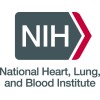
Bevacizumab, Cytarabine, and Mitoxantrone on Treating Patients With Hematologic Cancers
LeukemiaMyelodysplastic SyndromesRATIONALE: Monoclonal antibodies such as bevacizumab can locate cancer cells and either kill them or deliver cancer-killing substances to them without harming normal cells. Combining monoclonal antibody therapy with chemotherapy may be an effective treatment for hematologic cancer. PURPOSE: Phase II trial to study the effectiveness of bevacizumab combined with cytarabine and mitoxantrone in treating patients who have hematologic cancer.

Azacitidine Plus Amifostine in Treating Patients With Myelodysplastic Syndrome
Myelodysplastic SyndromesRATIONALE: Drugs used in chemotherapy use different ways to stop tumor cells from dividing so they stop growing or die. Amifostine may improve blood counts in patients with myelodysplastic syndrome. Combining azacitidine with amifostine may kill more cancer cells. PURPOSE: Phase II trial to study the effectiveness of azacitidine plus amifostine in treating patients who have myelodysplastic syndrome.

Chemotherapy, Radiation Therapy, and Peripheral Stem Cell Transplantation in Treating Patients With...
LeukemiaLymphoma2 moreRATIONALE: Peripheral stem cell transplantation may be able to replace immune cells that were destroyed by the chemotherapy or radiation therapy used to kill tumor cells. Sometimes the transplanted cells are rejected by the body's normal tissues. Transplanting donated cells that have been treated with psoralen may prevent this from happening. PURPOSE: Phase I trial to study the effectiveness of chemotherapy, radiation therapy, and psoralen-treated donor cells in treating patients who are undergoing peripheral stem cell transplantation for hematologic cancer.

Azacitidine Plus Phenylbutyrate in Treating Patients With Acute Myeloid Leukemia or Myelodysplastic...
LeukemiaMyelodysplastic Syndromes1 moreRATIONALE: Azacitidine plus phenylbutyrate may help leukemia cells develop into normal white blood cells. PURPOSE: Phase I trial to study the effectiveness of combining azacitidine and phenylbutyrate in treating patients who have acute myeloid leukemia or myelodysplastic syndrome.

Erlotinib Study for Myelodysplastic Syndrome (MDS)
Myelodysplastic SyndromeThe purpose of this research study is to find out what effects, good and/or bad, erlotinib has on the patient and their myelodysplastic syndrome. Erlotinib has been approved by the Food and Drug Administration (FDA) to treat non-small cell lung cancer; however, erlotinib use in this study is considered investigational as the FDA has not approved it for the treatment of myelodysplastic syndrome.

A Pilot Study of a Thrombopoietin-Receptor Agonist, Eltrombopag, in Patients With Low to Int-2 Risk...
Myelodysplastic SyndromesThrombocytopeniaBackground: Myelodysplastic syndromes (MDS) are bone marrow disorders characterized by anemia, neutropenia, and thrombocytopenia (low red blood cell, white blood cell, and platelet counts). Patients with MDS are at risk for symptomatic anemia, infection, and bleeding, as well as a risk of progression to acute leukemia. Standard treatments for MDS have significant relapse rates. MDS patients with thrombocytopenia who fail standard therapies require regular, expensive, and inconvenient platelet transfusions, and are at risk for further serious bleeding complications. Eltrombopag is a drug designed to mimic the protein thrombopoietin, which causes the body to make more platelets. Eltrombopag has been able to increase platelet counts in healthy volunteers and in patients with chronic ITP (a disease where patients destroy their own platelets very rapidly and thus develop thrombocytopenia), but researchers do not know if the drug can increase platelet counts in patients with MDS. Objectives: To find out whether eltrombopag can improve platelet counts in patients with MDS. To determine whether eltrombopag is safe for patients with MDS. Eligibility: Patients 18 years of age and older who have consistently low blood platelet counts related to MDS that has not responded to conventional treatment. Platelet count ≤ 30,000/μL or platelet-transfusion-dependence (requiring at least 4 platelet transfusions in the 8 weeks prior to study entry); OR hemoglobin less than 9.0 gr/dL or red cell transfusion-dependence (requiring at least 4 units of PRBCs in the eight weeks prior to study entry) OR ANC≤500 Design: Treatment with eltrombopag tablets once per day for 16-20 weeks. Participants will be monitored closely throughout the initial treatment, with weekly blood tests and separate evaluations at the National Institutes of Health (NIH) treatment center every 4 weeks. Bone marrow biopsies may be conducted to check for abnormalities in bone marrow. If patients show signs of improved platelet counts after 90 days, treatment will continue with additional doses of eltrombopag. Patients who discontinue taking eltrombopag will be evaluated at the NIH treatment center 4 weeks after ending treatment, and again 6 months after ending treatment to check for potential side effects.

Vorinostat in Combination With Azacitidine in Patients With Newly-Diagnosed Acute Myelogenous Leukemia...
LeukemiaThe goal of this clinical research study is to learn if the combination of azacitidine and vorinostat can help to control AML or MDS better than azacitidine alone. The safety of this drug combination will also be studied.

A Phase Ib/IIb, Open-label, Multi-center, Study of Oral Panobinostat Administered With 5-Azacitidine...
Myelodysplastic SyndromesChronic Myelomonocytic Leukemia1 moreThe purpose of this randomized, two-arm, open-label expansion phase study was to collect preliminary efficacy data of panobinostat at the recommended phase II dose (RPIID) level in combination with azacytidine (5-Aza) versus an active control arm 5-Aza alone. This randomized phase II part also allowed collecting safety data of panobinostat in combination with 5-Aza in comparison to single-agent 5-aza.

Treosulfan, Fludarabine Phosphate, and Total-Body Irradiation Before Donor Stem Cell Transplant...
Accelerated Phase Chronic Myelogenous LeukemiaAdult Acute Lymphoblastic Leukemia in Remission22 moreThis phase II trial is studying how well giving treosulfan together with fludarabine phosphate and total-body irradiation followed by donor stem cell transplant works in treating patients with high-risk acute myeloid leukemia, myelodysplastic syndrome, acute lymphoblastic leukemia. Giving chemotherapy, such as treosulfan and fludarabine phosphate, and total-body irradiation before a donor bone marrow or peripheral blood stem cell transplant helps stop the growth of cancer cells. It may also stop the patient's immune system from rejecting the donor's stem cells. The donated stem cells may replace the patient's immune cells and help destroy any remaining cancer cells (graft-versus-tumor effect). Sometimes the transplanted cells from a donor can also make an immune response against the body's normal cells. Giving tacrolimus and methotrexate before and after transplant may stop this from happening

Wilm's Tumor 1 Protein Vaccine to Treat Cancers of the Blood
LeukemiaAcute Myelogenous (AML)6 moreBackground: Most patients with acute lymphoblastic leukemia (ALL) and many patients with acute myelogenous leukemia (AML), chronic myelogenous leukemia (CML) and non-Hodgkin's lymphoma (NHL) have a protein called Wilm's Tumor 1 (WT1) in their cancer cells. This protein is thought to be able to influence the growth of these cancers. A vaccine made with the WT1 protein may boost the immune system to help fight these cancers in patients whose cancer cells contain the protein. Objectives: To determine the safety, effectiveness and side effects of giving the WT1 vaccine and donor white blood cells to patients with AML, ALL, CML or NHL who have previously received standard treatment and undergone stem cell transplantation. To determine the immune response to the WT1 vaccine and donor white blood cells in these patients and to determine if the response is related to the amount of WT1 protein in the patient's cancer cells. Eligibility: Patients between 1 and 75 years of age with the blood antigen human leukocyte antigen (HLA-A2) and the WT1 cancer protein who have persistent or recurrent blood cancers after stem cell transplantation. The prior stem cell transplant donor must be willing to provide additional cells, which will be used to prepare the cellular vaccines and for donor lymphocyte (white blood cell) infusions. Design: Patients are given the WT1 vaccine every 2 weeks for 6 weeks (weeks 0, 2, 4, 6, 8, 10). Each vaccination consists of two injections in the upper arm or thigh. On weeks 0, 4 and 8, patients also receive white blood cells from a donor to enhance the immune response. The cells are also given as a 15- to 30-minute infusion through a vein about 1 hour after the vaccine injection. Donor infusions are given only to patients with mild or no graft-vs-host disease resulting from their prior stem cell transplantation. Periodic physical examinations, blood and urine tests, scans to evaluate disease and other tests as needed are done for 12 months after enrollment in the study.
